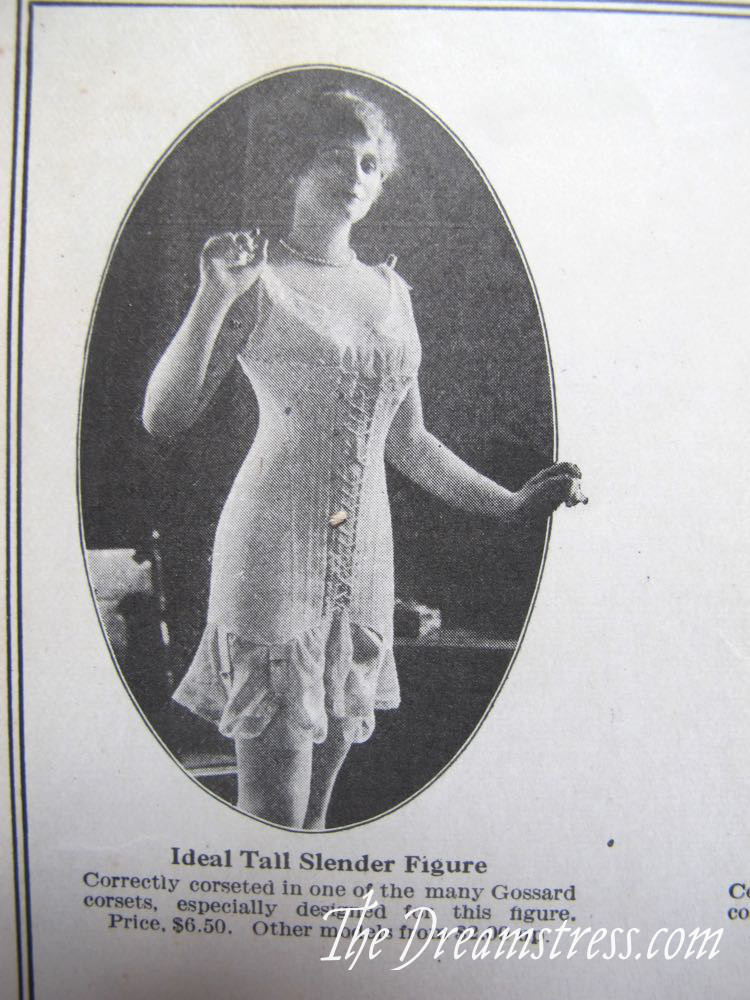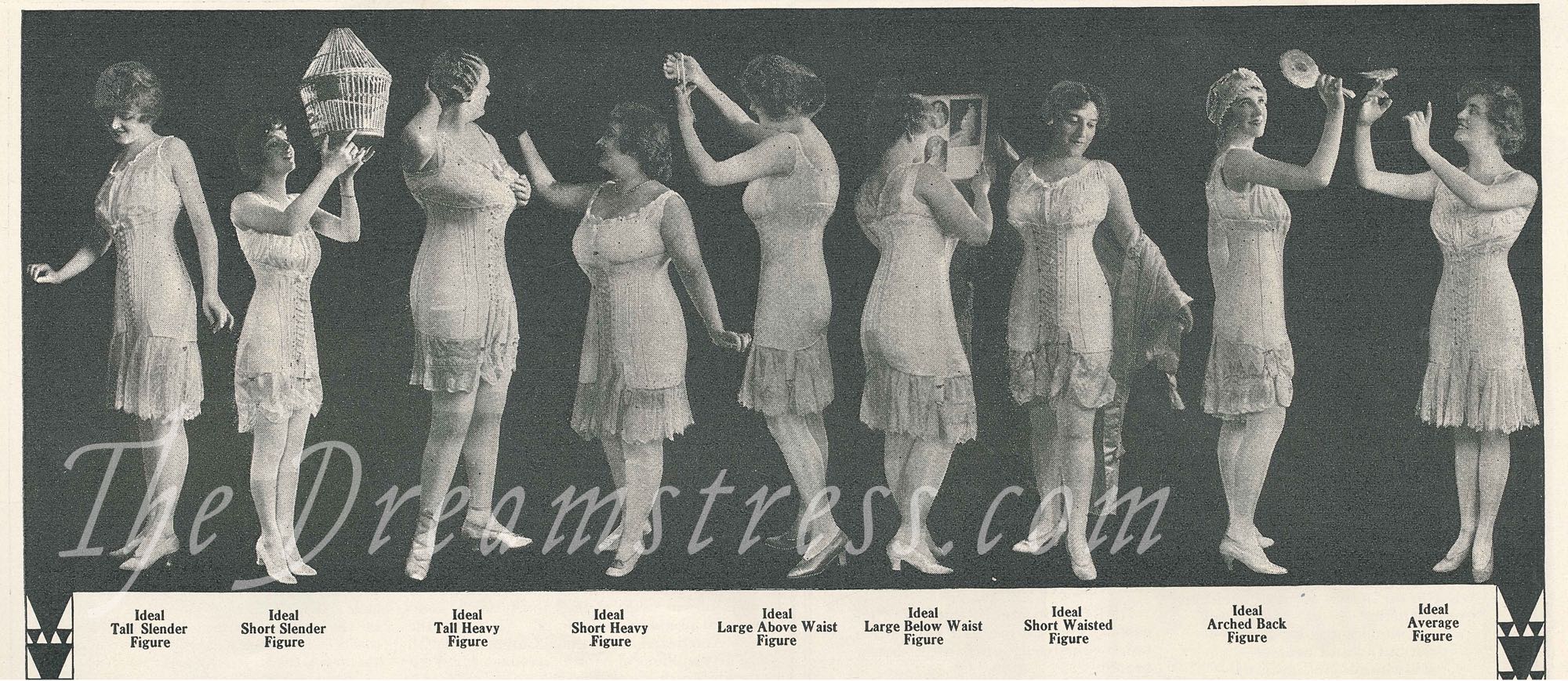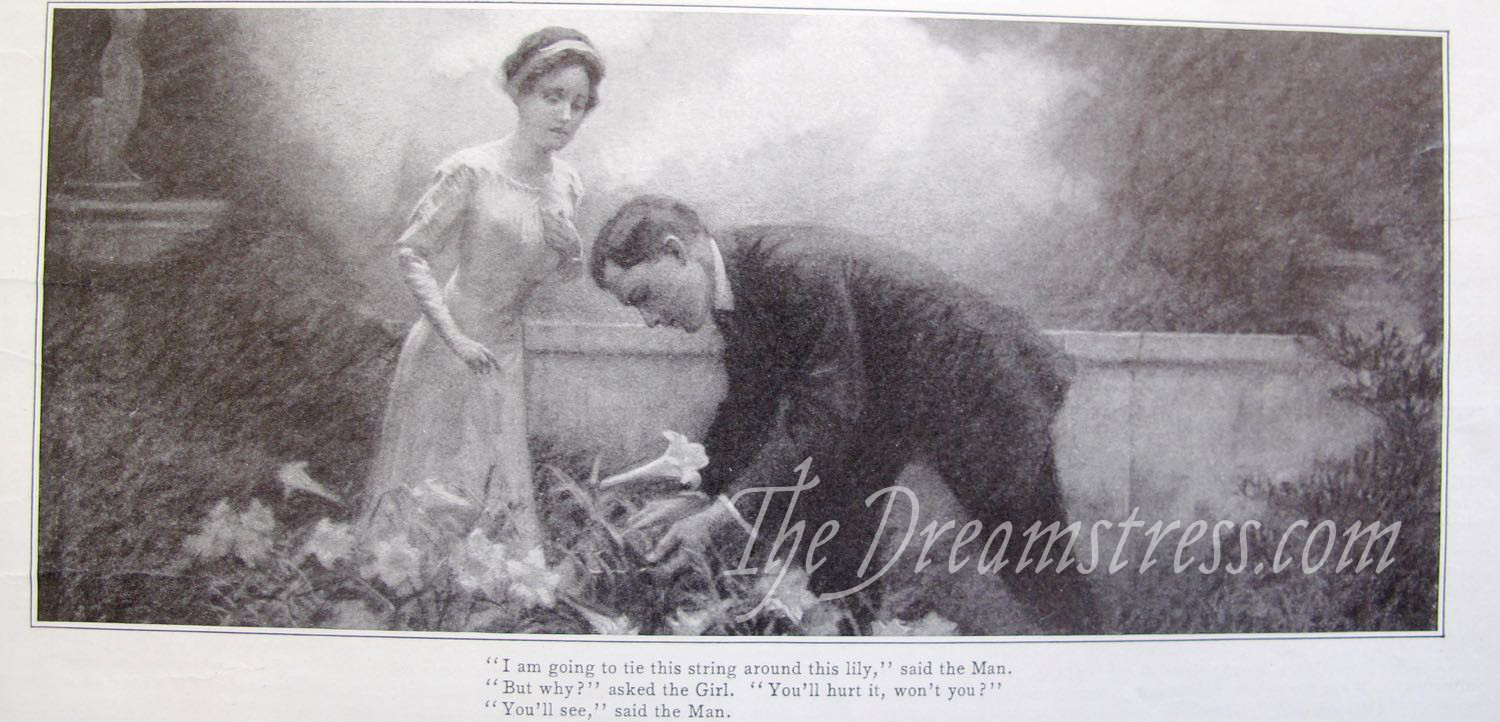The Ideal WWI era figure: Part II
I started my series on the fashionable ideal of the figure in the WWI era (specifically 1913 to 1921, the years covered by the Scroop Rilla Corset) with a look at a Gossards Corset ad which showed a whole variety of ‘ideal’ figures: While these figures look diverse, they all have some traits in common, so let’s look at what they are. The fashionable figures shown in magazines and advertising ca. 1916, whether they are tall or short, large or small, all tend to feature the following: Low, moderately full busts (larger at the start of WWI, reducing as the war progresses) Small but not tiny or exaggerated waists Full, sloping bottoms, with the fullness quite low (as opposed to the modern fashion, which tends to favour high, pert bottoms). I call the WWI figure a ‘slight hourglass’ – with a gentle transition from bust to waist to hips, rather than the extreme curves of the early Edwardian era. Here is the low, full bust: Notice how much lower the bust sits compared to where …



